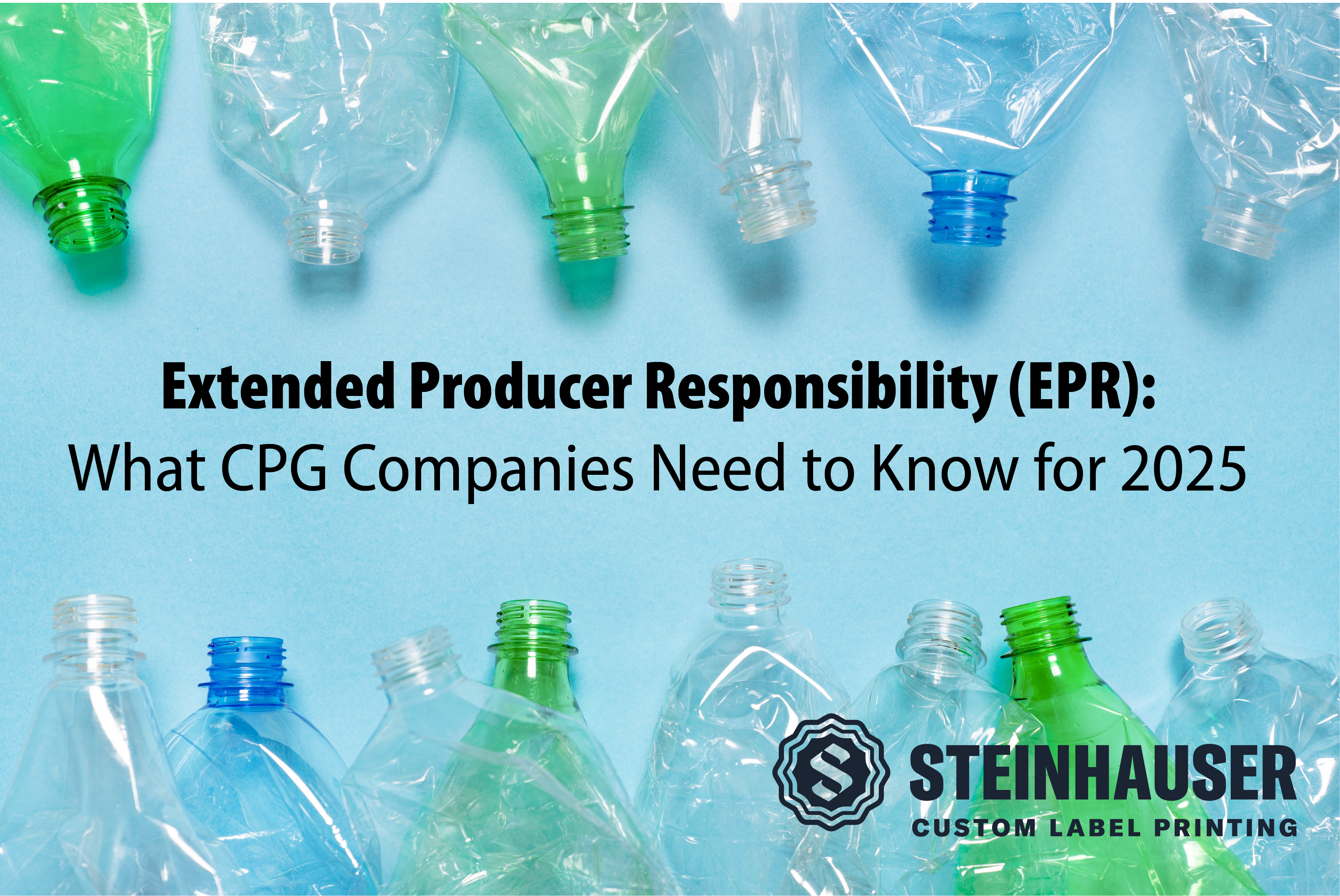As the packaging landscape evolves, Extended Producer Responsibility (EPR) regulations are reshaping how consumer packaged goods (CPG) companies handle packaging waste. These new regulations, being introduced across various U.S. states and globally, shift responsibility for packaging disposal from local governments to the producers.
What is EPR?
Extended Producer Responsibility (EPR) is a policy requiring manufacturers to manage the entire lifecycle of their packaging, including its disposal. Brands will now be held accountable for the costs associated with collecting, recycling, or disposing of packaging materials.
The Role of Labels and Shrink Sleeves in EPR
Although the focus of EPR legislation is centered around the containers used in packaging, labels and shrink sleeves can significantly affect a product’s recyclability. Under EPR regulations, brands must carefully evaluate all materials used to ensure they don’t hinder the recyclability of primary packaging.
- Sustainable Label Materials: Traditional plastic labels and shrink sleeves are beginning to shift to sustainable alternatives, such as labels and liners made from post-consumer recycled (PCR) content. Shrink sleeves made from recyclable polymers can also improve a package’s recyclability.
- Adhesives: EPR will likely enforce stricter rules around adhesives on labels. Non-recyclable adhesives complicate the recycling process, increasing costs for manufacturers. Brands should explore recyclable-compatible adhesives.
- Label Size and Design: Overly large labels can prevent efficient sorting and recycling. By reducing label size or using perforated shrink sleeves that can be easily removed, brands can enhance the recyclability of their products.
How EPR Impacts CPG Brands Using Labels and Shrink Sleeves
For brands using labels and shrink sleeves, EPR compliance will require re-evaluating the materials and design of these components. Here’s how it could affect your business:
- Higher Costs for Non-Recyclable Materials: Non-recyclable labels or shrink sleeves may result in higher fees under EPR laws. For example, California’s EPR regulations penalize the use of materials that cannot be easily processed by recycling facilities. Shifting to more sustainable options can reduce future costs.
- Design for Disassembly: Packaging that allows for easy separation of labels or shrink sleeves from containers is more valuable under EPR. For instance, perforated shrink sleeves that consumers can easily remove before recycling improve the likelihood that the primary package will be properly recycled.
- Opportunities for Sustainability Messaging: EPR’s focus on reducing waste also creates marketing opportunities. Highlighting the recyclability of labels and shrink sleeves can enhance consumer trust and differentiate your brand. Clear instructions for removing labels or sleeves for recycling can further align with consumer expectations for sustainability and transparency.
Steps for CPG Companies to Prepare
- Review Label Materials: Conduct a sustainability audit of your labels and shrink sleeves to ensure they align with EPR goals. Transition to recyclable materials that comply with state and global regulations.
- Collaborate with Suppliers: Work with suppliers to explore eco-friendly alternatives, such as PCR plastics, recyclable shrink sleeves or non-disruptive adhesives. Ensure materials are certified sustainable to meet regulatory standards.
- Incorporate Smart Labeling: EPR programs encourage transparency. Adding QR codes or smart labels can educate consumers on how to properly recycle packaging, contributing to higher recycling rates and brand loyalty.

Extended Producer Responsibility is shaping the future of packaging. CPG companies must adapt their use of all packaging materials to meet these new regulations. By prioritizing recyclable materials, designing for sustainability, and educating consumers on proper disposal, brands can comply with regulations while enhancing their environmental impact. You can also read more here on the APR website.


